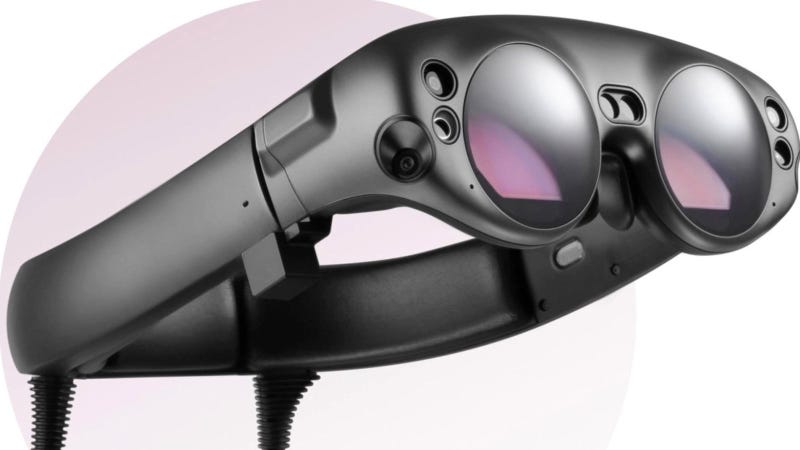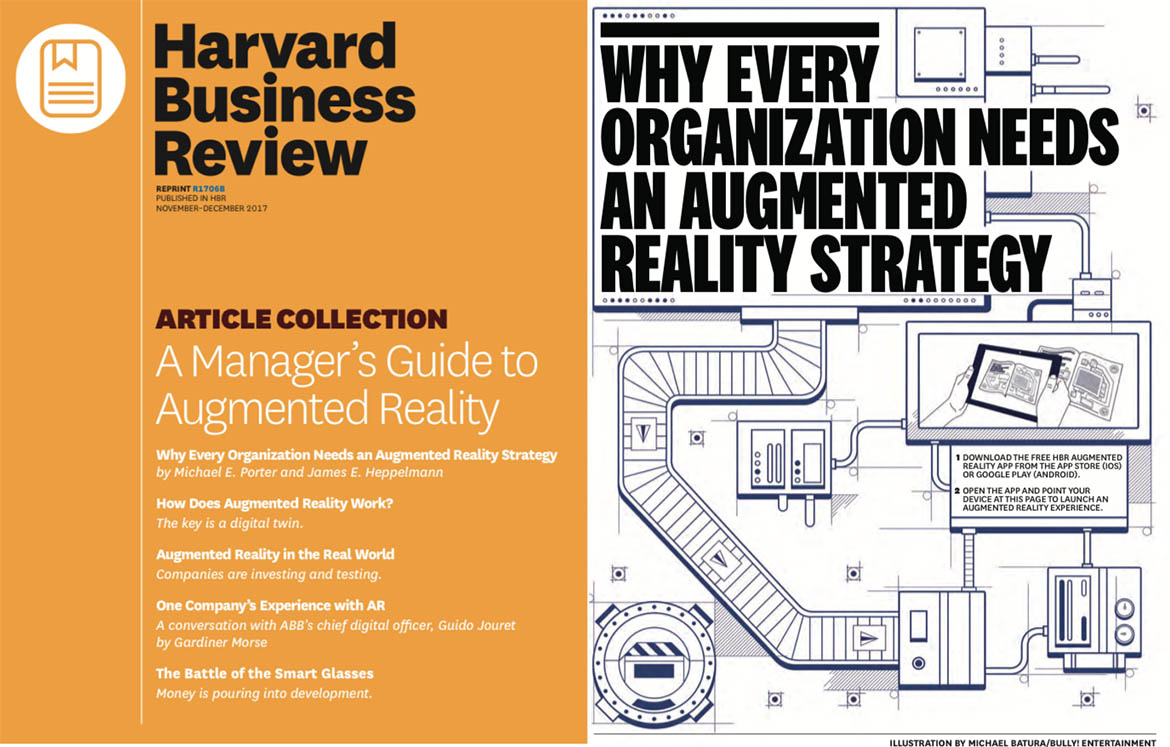We Need to Talk About Magic Leap's Freaking Goggles
Magic Leap finally did it. After $2 billion in funding and a few years of leaks, teases, and hints, Magic Leap finally has an actual product that someone has actually touched with their actual hands. Magic Leap announced the Magic Leap One Creator Edition as we all got to our desks this morning, and Rolling Stone quickly followed with a description of using the device. It’s a big wordy read, but it finally reveals exactly why the startup was able to get so much funding. This is augmented reality that actually interacts with your environment—it’s selling a whole new way of perceiving 3D virtual objects, and it requires some ugly ass goggles to do it.
The goggles (pictured above in all their dumb glory) are a pain, because man, the tech Rolling Stone describes is cool as hell. To date, AR has been a gauzy kind of hologram over the real world. Let’s use the Jedi ChallengesAR game released earlier this year as an example. It’s already out in the real world, and like the Magic Leap One, it uses goggles for the AR experience. Here’s Kylo Ren in that experience.
It’s very obvious that Kylo Ren isn’t actually in the room. If you were to step between me and this goofball, he wouldn’t disappear. He’d still be there, you’d still be in front of me, and I would be very aware that Kylo Ren is a total fake.
But according to the Rolling Stone report, that experience would be different if I were wearing the Magic Leap One. Writer Brian Crecente describes trying out an AR experience involving a virtual robot:
The robot obediently appeared in the distance, floating next to Miller. Miller then walked into the same space as the robot and promptly disappeared. Well, mostly disappeared, I could still see his legs jutting out from the bottom of the robot.My first reaction was, “Of course that’s what happens.” But then I realized I was seeing a fictional thing created by Magic Leap technology completely obscure a real-world human being. My eyes were seeing two things existing in the same place and had decided that the creation, not the engineer, was the real thing and simply ignored Miller, at least that’s how Abovitz later explained it to me.
That level of interaction between real world and virtual objects in AR is wildly difficult to accomplish. It’s a big deal.
Equally big, but more difficult to hype, is the kind of technology Magic Leap purports to be using in the Magic Leap One to visualize all its augmented reality. According to Magic Leap, it’s manipulating the light field we perceive the world through.
That sounds like science fiction. It’s not. First coined in 1936, “light field” is meant to call to mind magnetic fields. Essentially, it’s a phrase you use to refer to all the light bouncing off objects. Cameras and modern displays interpret a small fraction of that field, which is why images taken by cameras or portrayed on displays appear flat. The human eye can interpret much more of the light field, and artificial light fields have generally come up against an issue of creating more data than a human can actually process, because the human innately knows it isn’t real.
As Rolling Stone explains, Magic Leap founder Rony Abovitz postulated that if you could isolate the part of the light field the human eye is accustomed to parsing you could create a focused artificial light field.
Thus computer generated images, like the two dimensional virtual ones you might spy when using an AR headset, would appear three dimensional. This would be much more realistic than the kind of stereoscopic 3D viewing tech found in all TVs, games, and movie theaters today. Abovitz told Rolling Stone, “I call this the cockroach of the industry because it just never dies and it needs to just stop.”
As noted in the piece, stereoscopic 3D tech has been around for well over a hundred years. People would watch images pop out at carnival side shows in the late 1800s and early 1900s. They’d strap on red and blue glasses in the 60s and big grey glasses in the 2000s. Even the VR headset you might use today uses a variation of stereoscopic 3D technology, which shows you the same thing in both eyes, but slightly off axis, tricking your brain into perceiving the two slightly different 2D objects as one 3D object.
Magic Leap would toss all that (and the headache you probably get from extended 3D viewing) out. In theory anyway. And let’s hope so, because the masses are going to need something crazy good to buy in. Remember how most people slept on smartphones and Bluetooth headsets until they were an iPhone or a pair of wireless earbuds that also played tunes? That’s the kind of, well, leap this tech will need to achieve before people wear something this dorky.
I mean look at this shit!
Sure, it’s better than the awful backpack leaked earlier this year.
And it’s nowhere near as bad as developer models for other mixed reality darlings, like the original Oculus Rift, or even the Microsoft HoloLens. Comparatively speaking, the Magic Leap One goggles are sleek and borderline cool. For a developer eager to dip their toes into the sweetest sounding mixed reality experience yet, this headset’s look will not detract.
But still, what does an ordinary person see here?
Look at that very attractive man. He has tattoos! He can pull off a thin t-shirt without looking cheap or sloppy! That beard is trimmed. And he still looks like a dork. I still have the urge to give him a wedgie or a wet willy, or at least try and knock that dorky looking computer off his hip.
This guy is basically wearing the first step towards a holodeck strapped to his face, and all I want to do is call him a nerd and mock his life choices.
The biggest hurdle Magic Leap faces isn’t explaining artificial light field technology to the masses, it’s overcoming the fact that in order to get true, scifi level augmented reality a person is gonna have to look like the biggest dweeb on the planet. People do not want to look like dweebs when engaging with technology.
And Magic Leap has to know that. Google Glass is way too fresh in the minds of people in this business. Which means the company is confident it can actually deliver an experience so incredible looks don’t matter. It’s investors are confident too, or they wouldn’t be throwing so much cash into the start up. The Magic Leap One sounds really cool, and I can only hope it lives up to the hype train it’s currently racing through the media on. I’m ready for the AR future, man.





